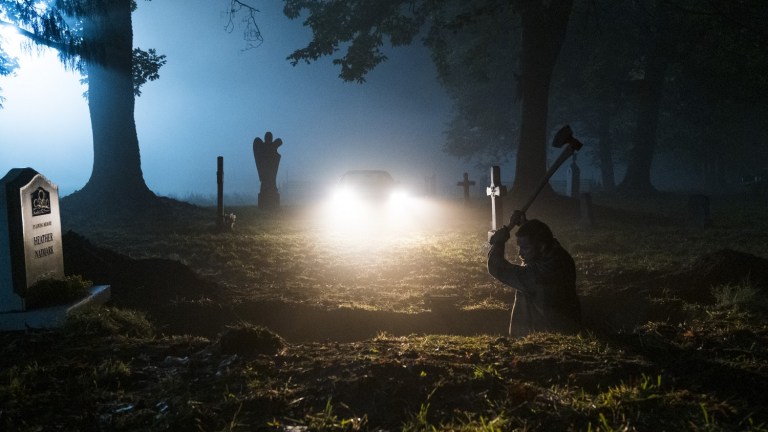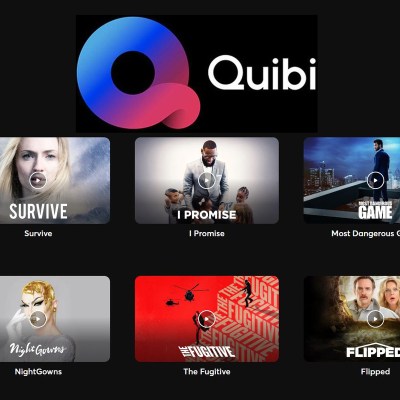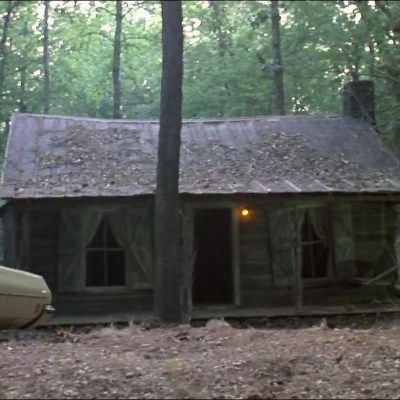How 50 States of Fright Brings Horror to Quibi
50 States of Fright director/executive producer Sam Raimi explains how the short-form horror show was hatched.

Director, writer and producer Sam Raimi may be best known to mainstream audiences for directing blockbuster movies like the original Spider-Man trilogy (with Tobey Maguire) and Oz the Great and Powerful. But Raimi got his start making one of the greatest independent horror movies of all time: The Evil Dead. Shot quick and dirty, the film became an instant classic and spawned a franchise encompassing more movies, TV, comics and video games.
Raimi has dipped in and out of the horror genre over the years, while moving into bigger movies and different genres (he’ll revisit the Marvel universe soon too with Doctor Strange in the Multiverse of Madness), but his new project, an anthology series called 50 States of Fright, seems like a return to the kind of pulp, story-driven, no-frills horror with which he started his career.
The premise is simple: the show aims to adapt scary folk tales and urban legends from every state in the Union, with Raimi’s own Michigan-based story, “The Golden Arm,” kicking off the series. Additional entries by other writers and directors include “Ball of Twine” (Kansas), “Scared Stiff” (Oregon), “Grey Cloud Island” (Minnesota) and “Destino” (Florida), with more to come (the first two are available now; the latter three premiere on April 20, 22 and 27 respectively).
And here’s the twist: 50 States of Fright is available via Quibi, the new short-form programming outlet that is available (for now) only on your smartphones. Quibi is the brainchild of former Disney and Dreamworks Animation chairman Jeffrey Katzenberg, and aims to provide entertainment, news and other content broken down into chunks of time no longer than 10 minutes — “quick bites” (from which the name is derived) that are just long enough for viewers on the go to watch on their mobile devices.
On a conference call with Den of Geek and others, Raimi describes how the concept of the show came together and how he got involved. “It was really these other producers that came to me with the idea of 50 States of Fright, and they were working for a company called Gunpowder & Sky,” he explains. “They said, ‘We think that this is a really good format for a TV show, each week telling the horror story of a different state — all the lore of it. There’d probably be one or two stories for every state of the Union.’”
As soon as the idea was presented to him, it struck a chord with Raimi, who realized that his own home state of Michigan could provide the kind of material the producers were pitching. “In local tourist spots, you’ll see little books that a local writer has published, (things like) Ghost Stories of Michigan,” he recalls. “I’d seen something similar in the state of Illinois. I realized there must be stories for every state, and saw how instantly people would think, “Oh, I want to see the story from my state. I hope they use the stories I’ve heard as lore in my state. Or a neighboring state’s story. I wonder what happened there?’”
Raimi and the Gunpowder & Sky team took the idea to Quibi’s Katzenberg, who liked it and thought it was “perfect” for the short-form platform he was developing. Raimi — who has produced TV shows like Ash vs. Evil Dead but never programming as brief as that on Quibi — spoke about the specifics of working in the format and creating an approximately 24-minute story split into three chapters.
“Well, for our program, it was actually wonderful,” says the director. “Jeffrey said that his Quibis were going to be between five and 10 minutes long, and we could make a 25-minute show if we wanted to, and we would determine where the breaks would be. One could break after eight minutes, one could break after seven minutes, one break after nine minutes. Basically, based on the story and what the drama wanted, we could end each episode wherever we wanted.”
Raimi explains how that helped the storytelling: “With network TV, I’m sure that they probably very specific timelines as to when they have to go to commercial breaks, and it must be difficult in the writers to write to that demand,” he says. “Because sometimes the drama doesn’t want to peak just before the commercial break, but the writers have to make it peak. So I think Quibi’s format is very conducive to telling short stories, short horror stories.”
Other than that, Raimi says that production of the series was just like any other, with all the usual challenges: “The challenges of working in this format were limited time to shoot, like any television program would have, and limited resources,” he reveals. “These are not big budget films. They’re fairly precise with the budgeting. You have like a TV budget.”
Raimi continues, “It came down to not relying on visual effects or big budget spectacle, but trying to get back to the basics of telling a simple story. That was both the challenge given by the format and the limitations of budget, but also the advantage is that we knew that the audiences dig good stories. So that’s where we put our focus, trying to entertain with simple characters and plots and simple story construction to try and please the audience.”
Although his resume consists mostly of standard theatrical movies, ranging from 90 minutes to two-hours-plus, Raimi muses that shorter forms of entertainment might work best for horror tales. “I’m sure that there’s long form horror stories that work very well, such as great Stephen King books like Carrie or The Shining,” he says. “When you have a great writer who can fill out the second and third acts, with supporting characters and themes, then I think it works great. But for me, I’m not a great writer, but I do love ghost stories, the kind you tell around the campfire.
“So yes, I think it works beautifully to have a 15-minute type of story,” he affirms. “I think it’s kind of like a rollercoaster ride. You don’t really want to be on it for an hour and a half. I like a five-minute, 10-minute thrill experience with its ups and downs, so for me, the format is perfect for conveying thrills and chills and little ghost stories.”
One unique feature of Quibi is that, because it’s geared initially toward viewing on mobile devices, the images can be viewed either horizontally like a traditional film or TV image (if you’re holding your phone sideways) or vertically (if you’re holding the device straight up). The ability of the image to reconfigure itself depending on how you hold the device is due to a new software called Turnstyle that’s been deployed by the service.
Raimi says he did not direct his tale with the vertical format in mind. “My episode was not shot vertically. It was just shot in the standard, approximately 1.85 format, and it was cropped in post.” He adds, “The cropping was done by my editor, Bob Murawski, and I approved it, but I didn’t actually do the framing myself on the cropped version. I think the first season of 50 States of Fright is probably best seen in a landscape format.”
Although Quibi is a new format and its ultimate viability with the public remains to be seen, Raimi is optimistic about the potential for 50 States of Fright as an ongoing series and points to the enthusiasm among other creators to get involved with the show. “When writers and directors hear about the show, it seems like every one them is coming up to the producers, saying, ‘Hey, I’m from Iowa. Can I tell my little ghost story that we used to tell back home?’” he says. “Or somebody comes from New York and says, ‘There’s this story of this haunted bridge I want to tell. I grew up with that in New York.’
“It seems like everybody has a horror story from their home state,” he continues. “And all these writers and directors want to do their home state. So it’s through no real imagination of the producers or myself that this is expanding. First of all, it has to be successful on Quibi. But if it’s successful, we’ve got a lot of writers and directors who want to tell their ghost stories from their place of origin.”
50 States of Fright is available on Quibi now.


